The interdisciplinary team around the “Virtual Anatomy” software – Johannes Kepler University (JKU), Siemens Healthineers, and Ars Electronica Futurelab – has won the silver medal for “Innovation and Entrepreneurship Team of the Year” at the prestigious Triple E Awards. The Triple E Awards are a global recognition of entrepreneurship and engagement efforts in higher education. They are awarded at the regional level and are designed to promote change in higher education institutions and emphasize their role in their communities and ecosystems.
Titled “Three for Virtual Anatomy – Bringing anatomy education into the future,” the silver medal went to JKU and its partner institutions Futurelab and Siemens Healthineers. “Virtual Anatomy” was already honored with international awards in 2022: At the E&T Innovation Awards, the project received first place as “Best Emerging Technology of the Year” as well as the silver medal in the category “Most Innovative Solution in Digital Health and Social Care”.
With “Virtual Anatomy”, MRI and CT data from real patients can be experienced in a completely new way: as photorealistic data in 8K stereoscopic 3D – with the possibility of freely rotating the images and zooming in on the smallest structures. The software, which is available worldwide, can be presented in virtual experience spaces such as the Ars Electronica Center’s Deep Space 8K: with up to 33 million pixels and wall and floor projections measuring up to 16 by 9 meters.
Instructive awe
More than 180,000 visitors have already experienced “Virtual Anatomy” in Deep Space 8K at the Ars Electronica Center in Linz – and left with a whole new sense of inspiration and awe for the human body. The program’s unique opportunities are especially helpful for medical students, our doctors of tomorrow: they can now regularly attend “Virtual Anatomy” lectures in the JKU medSpace at JKU Linz – developed and supervised by the Ars Electronica Futurelab. Surveys on satisfaction with the course yield consistently excellent ratings, and initial studies show learning gains of up to 40%.
Ultimately, three factors were crucial in making the “Virtual Anatomy” idea such a success: The coming together of three experts from different disciplines, their enthusiasm for the project, and the will to collaborate beyond the boundaries of their fields and the current state of the art. Always with an eye on the future possibilities and diverse applications, from insights for the general public to highly specific lectures for medical professionals. The team’s advice from this project, which is still evolving after eight years, is to think innovation bigger and to take society, its future and its enthusiasm with them as an incentive and stimulus.
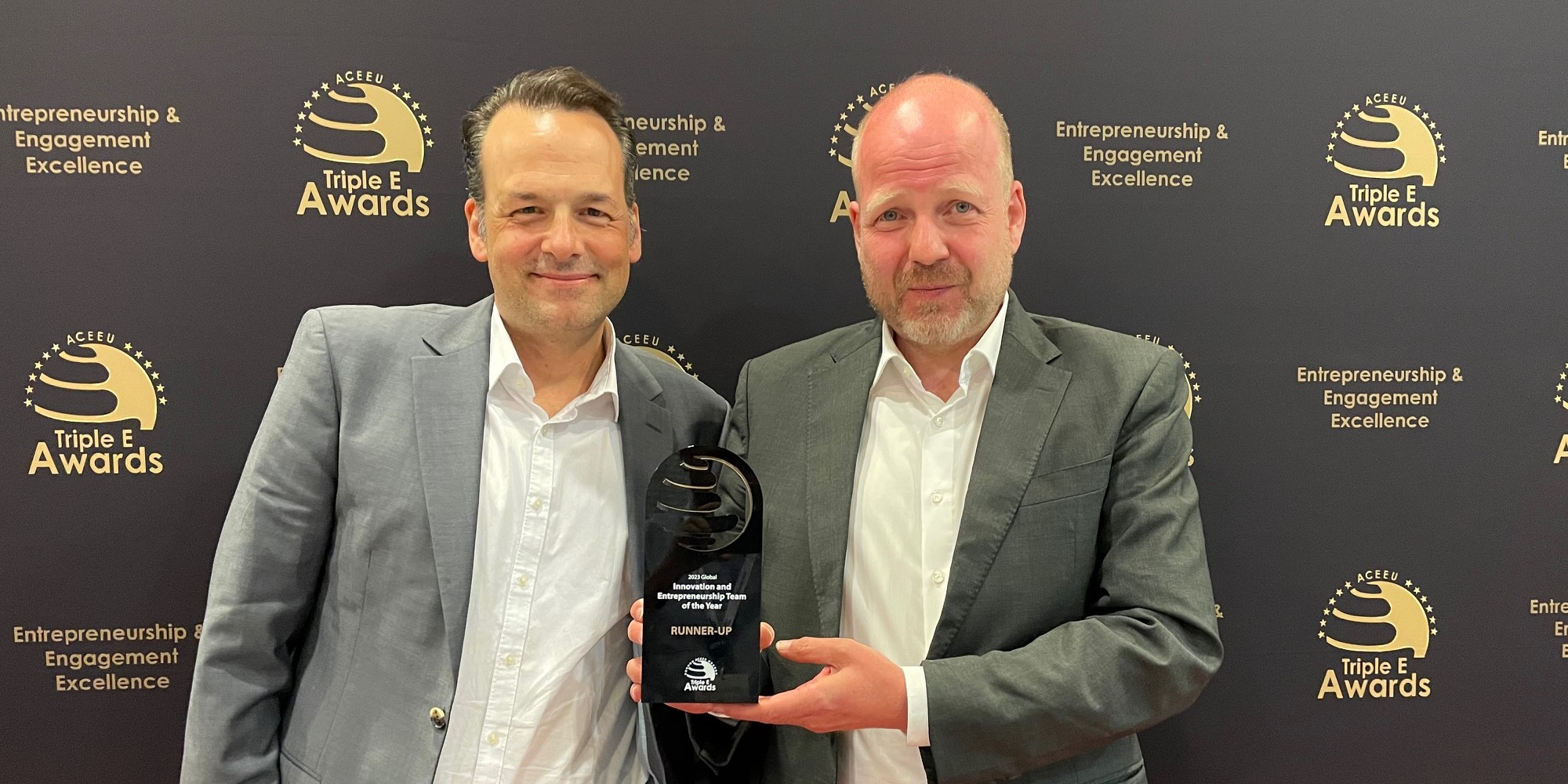
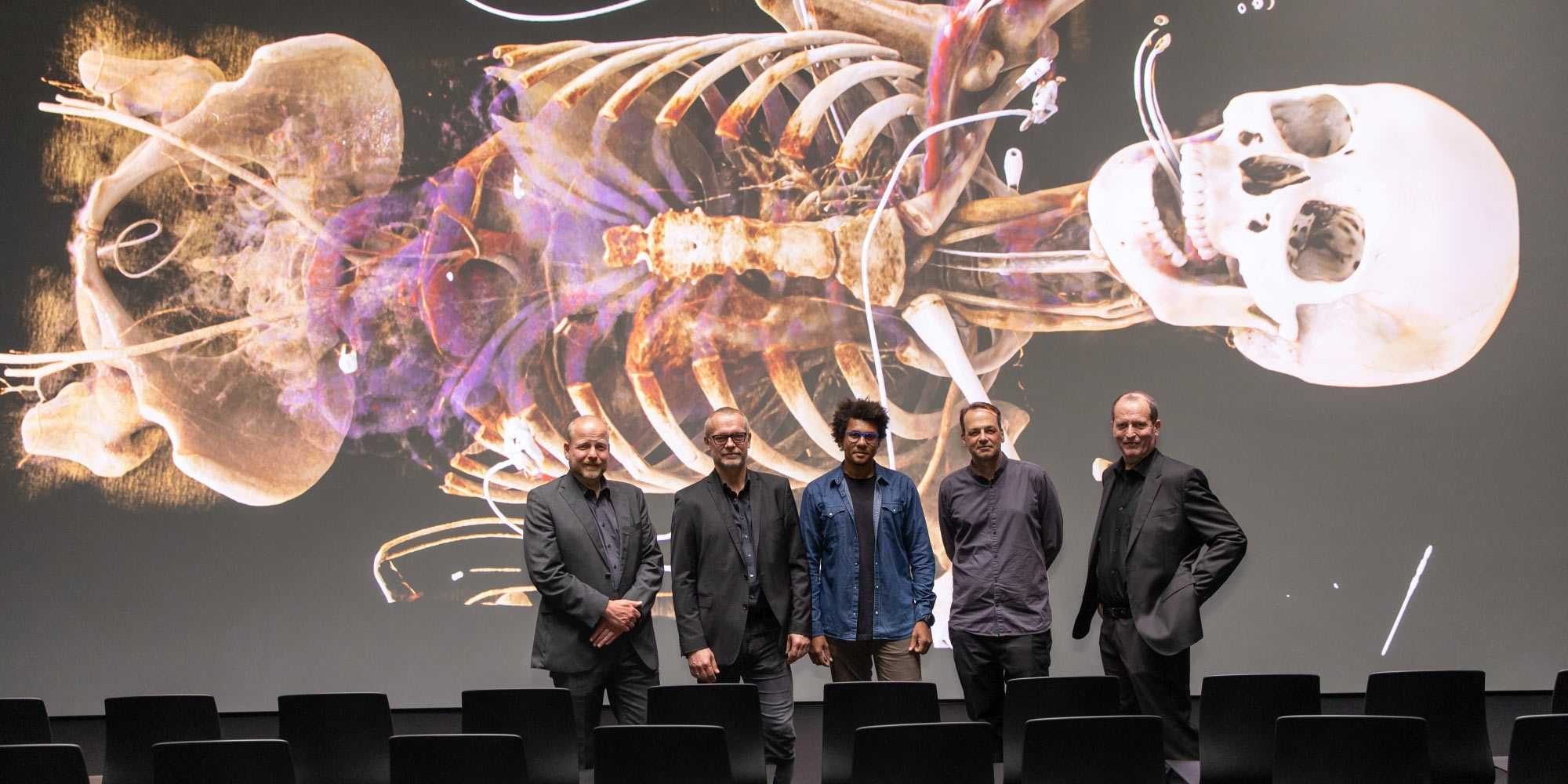
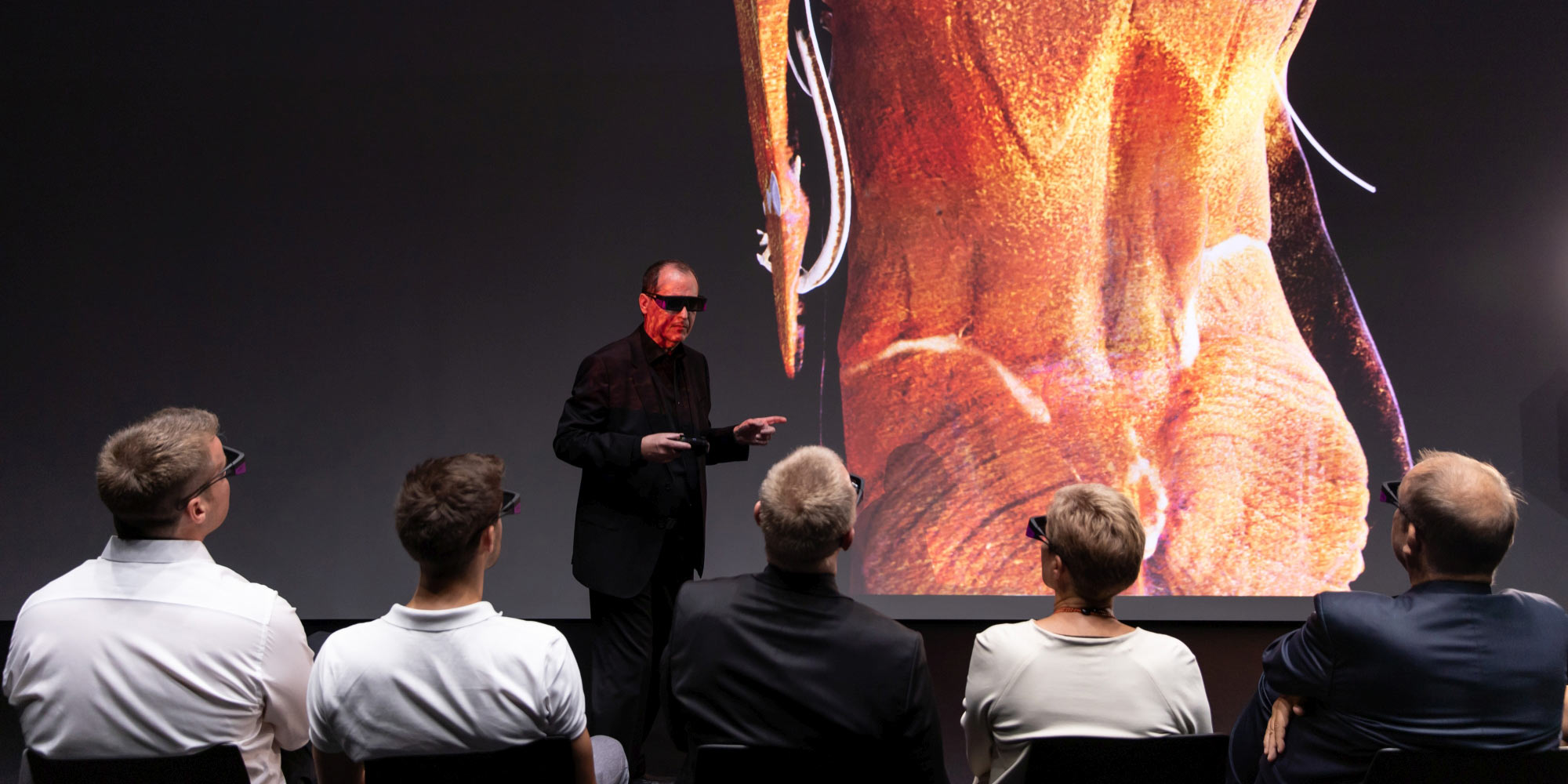
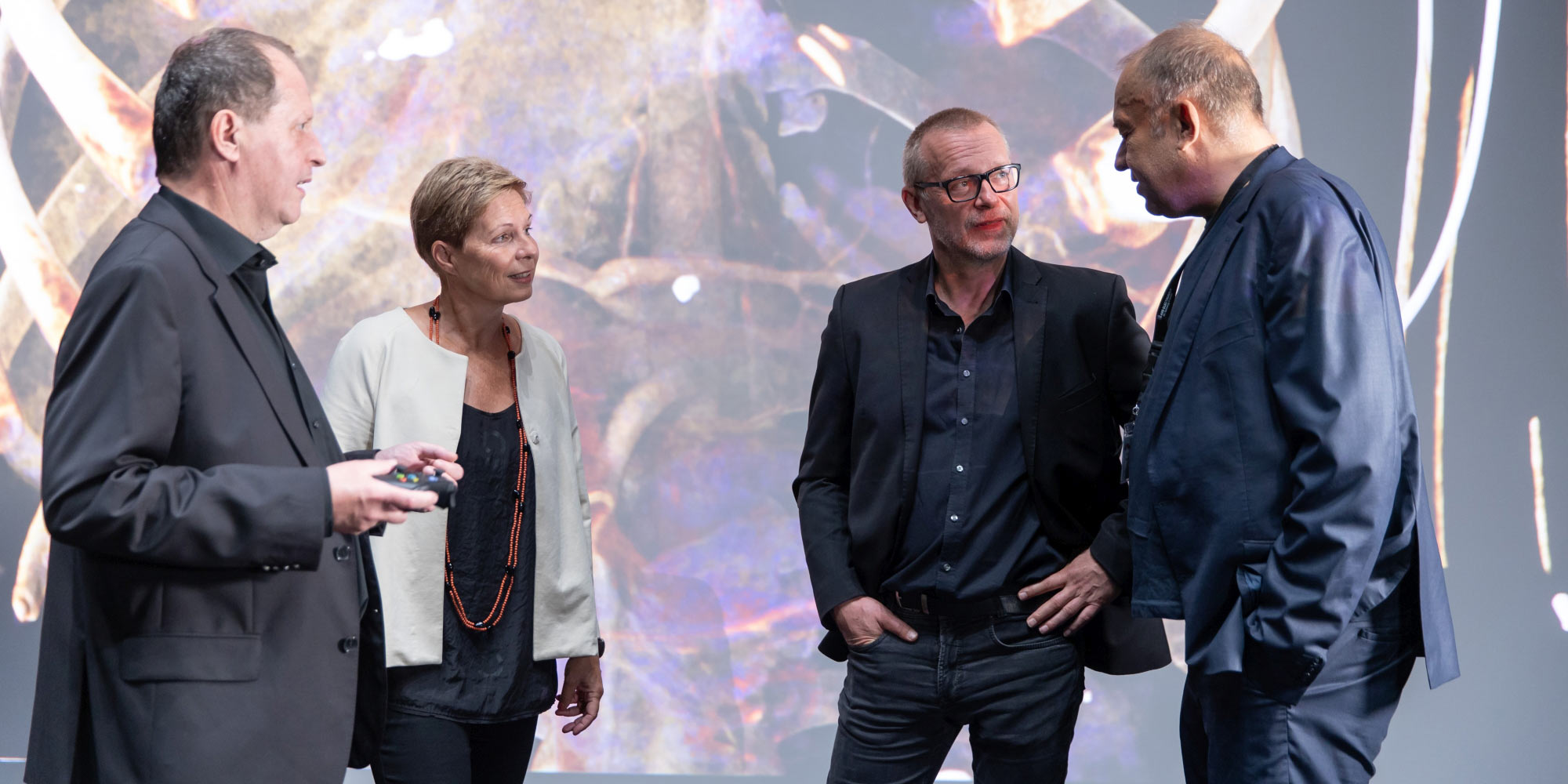
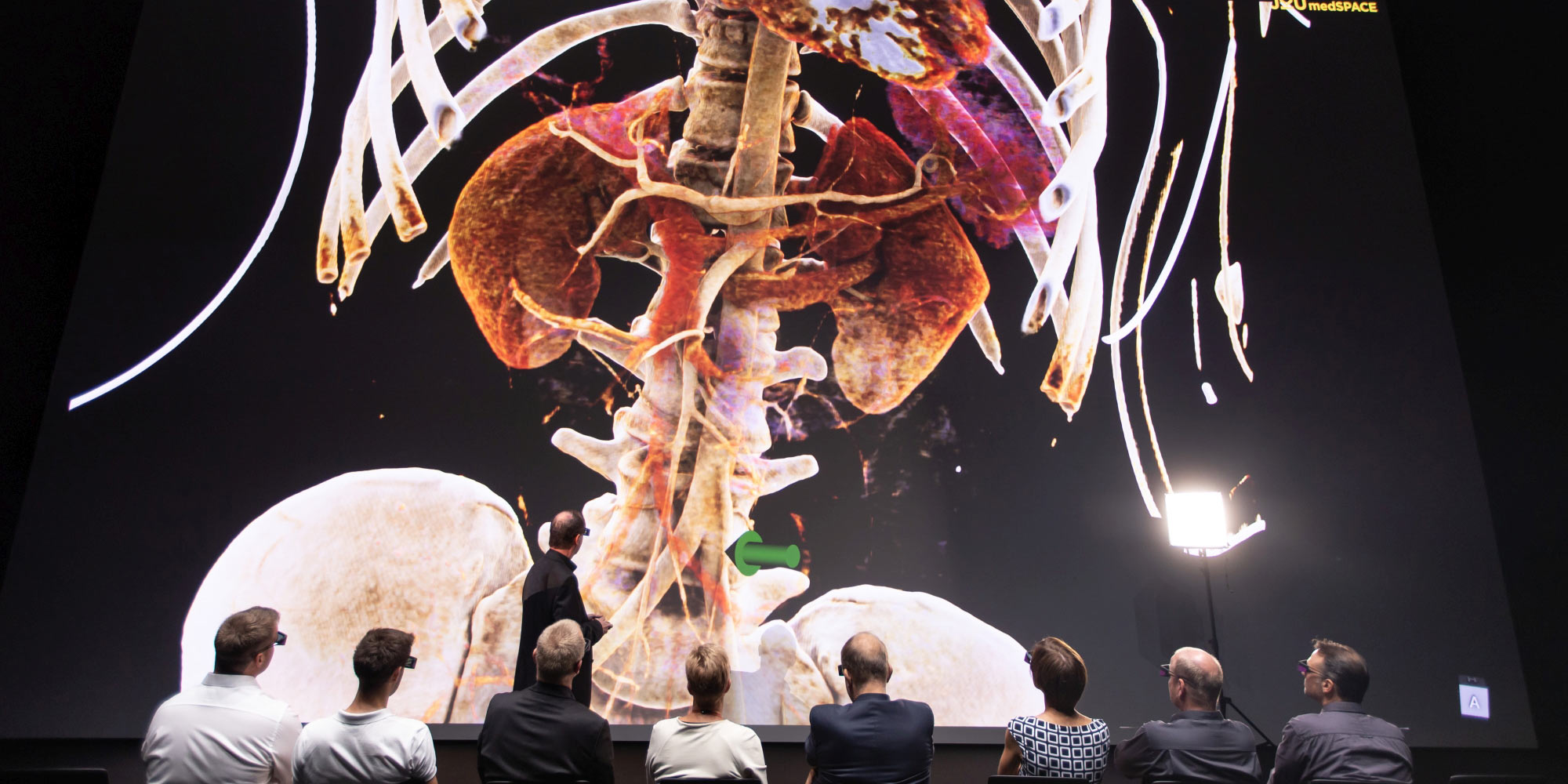


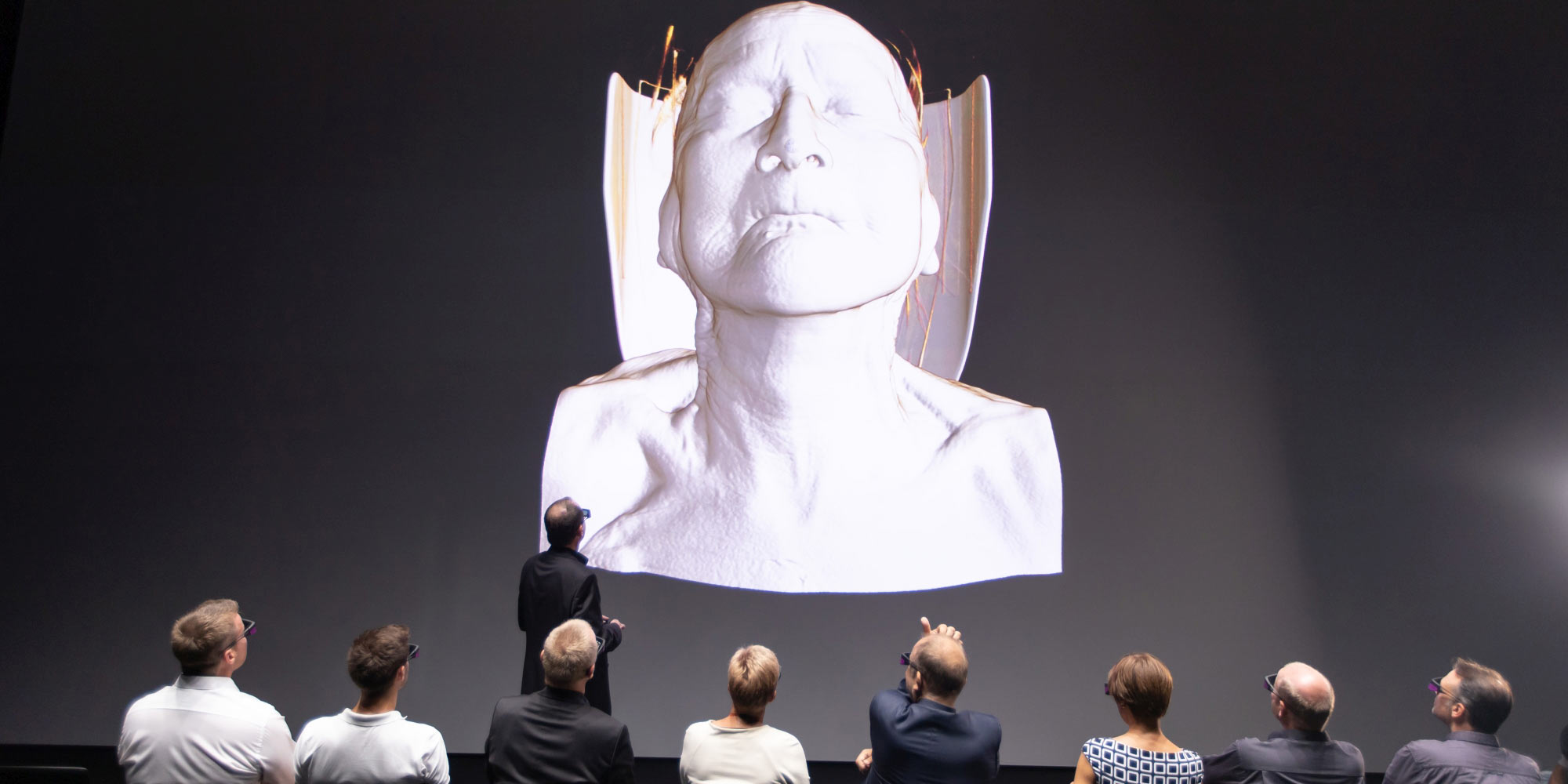
“Virtual Anatomy” is built on the “Cinematic Rendering” library by Siemens Healthineers: It imports data from MR and CT and renders the 3D images, and then “Virtual Anatomy” is used to add the interaction capabilities and display the data in stereoscopic 3D on the big screen and synchronize it on multiple workstations. The teams of Siemens Healthineers, the Johannes Kepler University and the Ars Electronica Futurelab have been successfully working together for several years now, guided by the expertise and visions by Prof. Franz Fellner from the JKU Medical Faculty and the Central Radiology Institute at the Kepler University Hospital in Linz.
Want to know more? Check out the Futurelab’s project pages on “Virtual Anatomy” and JKU medSpace. If you’d like more information or want to implement our technology, let’s get in touch!
